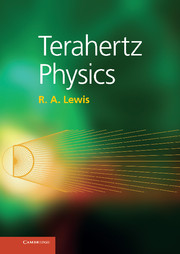Book contents
- Frontmatter
- Dedication
- Contents
- Preface
- 1 INTRODUCTION
- Part I Basics
- 2 OSCILLATIONS
- 3 COMBINING OSCILLATIONS
- 4 LIGHT
- 5 MATTER
- 6 INTERACTION OF LIGHT AND MATTER
- Part II Components
- Part III Applications
- Appendix A Prefixes
- Appendix B Mathematical symbols
- Appendix C Mathematics
- Appendix D Further reading
- Glossary
- Index
- Miscellaneous Endmatter
6 - INTERACTION OF LIGHT AND MATTER
from Part I - Basics
Published online by Cambridge University Press: 05 July 2013
- Frontmatter
- Dedication
- Contents
- Preface
- 1 INTRODUCTION
- Part I Basics
- 2 OSCILLATIONS
- 3 COMBINING OSCILLATIONS
- 4 LIGHT
- 5 MATTER
- 6 INTERACTION OF LIGHT AND MATTER
- Part II Components
- Part III Applications
- Appendix A Prefixes
- Appendix B Mathematical symbols
- Appendix C Mathematics
- Appendix D Further reading
- Glossary
- Index
- Miscellaneous Endmatter
Summary
This chapter calls on trigonometry and calculus, both differentiation and integration.
In this chapter, we will see what happens when terahertz-frequency electromagnetic radiation encounters matter.
Imagine driving along a freeway. All the cars are travelling along at the same, high speed, 100 kmh. There is no stopping or turning on the freeway. (It is a little bit boring, really.) Then the freeway ends. The traffic slows, say to 60 kmh. Some cars pull over at the shops. Some cars turn off to the suburbs. Others continue through the town, and rejoin the freeway, and continue at 100 kmh.
No analogy is exact, but the cars on the freeway are something like light in a vacuum. In a vacuum, light travels at a steady speed and in a straight line. Entering the town is something like light encountering matter; the speed limit decreases. When light encounters matter, it slows down. The change in speed is related to the refractive index and the phenomenon of refraction. Cars stopping are something like the absorption of light by matter; those vehicles are lost from the traffic flow. Some cars turn aside, just as the scattering of light diverts it from its original trajectory. Some cars may even make a U-turn and head back down the freeway along the direction they just came. This is something like the reflection of light. You can't make a U-turn on the freeway.
- Type
- Chapter
- Information
- Terahertz Physics , pp. 98 - 124Publisher: Cambridge University PressPrint publication year: 2013

